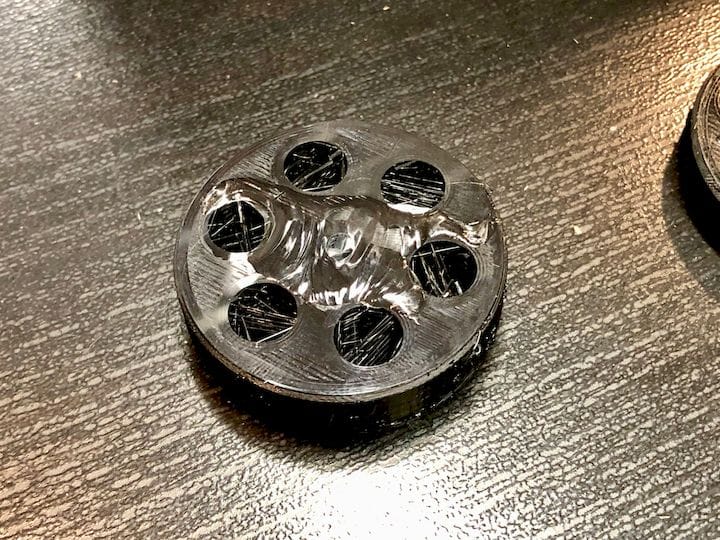![A 3D printed part with a chunk of build plate still attached [Source: Fabbaloo]](https://fabbaloo.com/wp-content/uploads/2020/05/image-asset_img_5eb092d4f065a.jpg)
In the lab something happened that I’d never seen before: a glass print plate broke.
The scenario was actually quite simple; some random PLA parts were being 3D printed in the usual manner. These parts were being printed on a MakerGear M3-ID 3D printer, which sports independent extruders.
The prints held very, very well to the plate, and were extremely difficult to remove. Eventually, the technician pulled so hard that the part came off — but with a chunk of the glass plate attached!
See image at top. That shiny area on the part bottom is not part of the print; it’s a piece of glass from the print bed.
![The surviving build plate has a chunk missing [Source: Fabbaloo]](https://fabbaloo.com/wp-content/uploads/2020/05/image-asset_img_5eb092d54ac0a.jpg)
No adhesion systems were used, although according to MakerGear, the build plate is:
“Borosilicate glass build plate coated with polyimide film.”
So there is an adhesion system on this glass plate by default.
The material used was MakerGear PLA, which should be excellently formulated for use on the machine.
The tech informed me that he had attempted a variety of means to extract the part, including putting the entire plate with attached part into the freezer to cool it down. Sometimes when temperature changes, the part material contracts at a different rate than the plate, and the two split.
However, in this case, even that didn’t work. It seems that the only way to remove the part would have been to melt it off somehow, perhaps with a blowtorch.
![Another view of the “hole” in our glass 3D printer build plate [Source: Fabbaloo]](https://fabbaloo.com/wp-content/uploads/2020/05/image-asset_img_5eb092d59e841.jpg)
I’m interested to hear if readers have any alternative approaches for releasing troublesome prints? If you have any good ideas, please drop them in the comments below.
We’ll have to order a replacement build plate from MakerGear.
This unfortunate scenario illustrates the paradox of 3D print build plates: they must absolutely hold the part down without any movement, but they also must completely release the part with as little effort as possible.
How can something stick — and not stick — at the same time? That’s the impossible challenge of 3D printer build plates.
Most adhesion systems are either a compromise where the print “sort of” sticks but not enough to be permanent, or a type where some condition, typically a change in temperature, causes the print to be released. I suspect the MakerGear plate design was the former, given the presence of the polyamide film.
In this case, it must have been some pathological combination of material type, bed temperature and surface area that could have caused the over-sticking problem. It is also possible that someone mistakenly cleaned the plate with a chemical that supercharged the adhesion effect somehow.
The moral of the story here is that you should be careful with glass plates; they can break if sufficiently bonded to a print.











